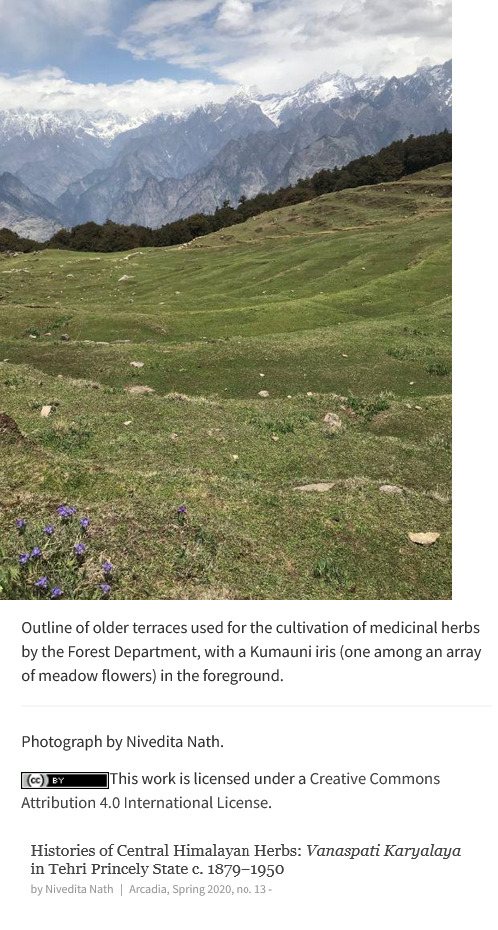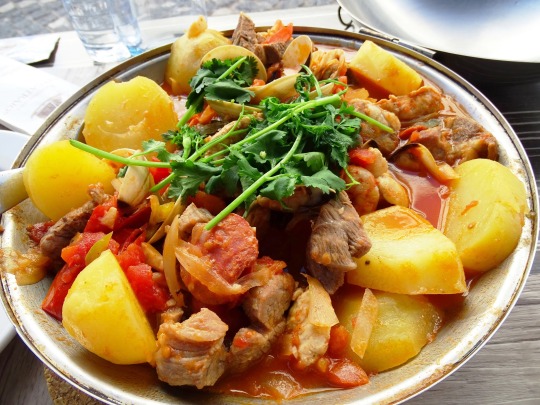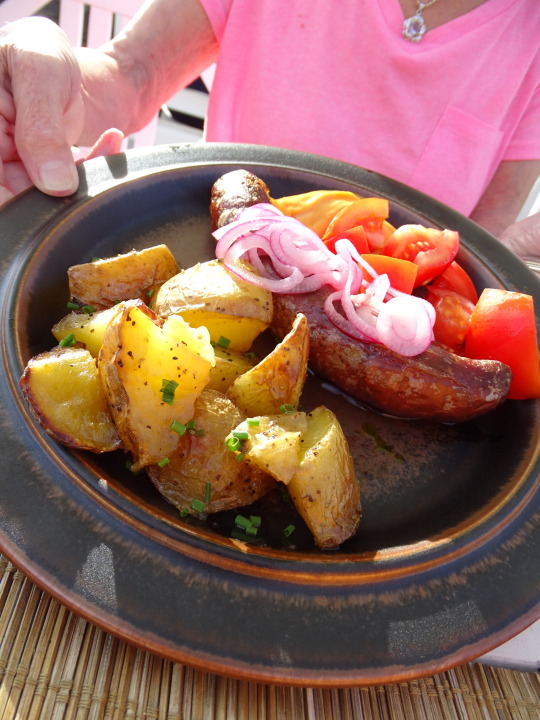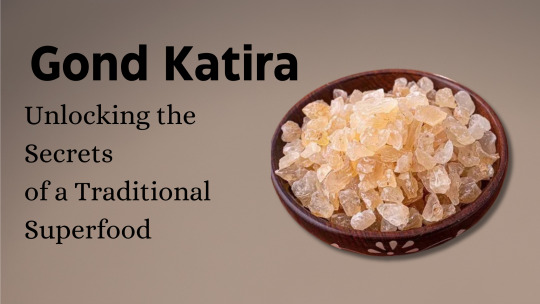#Indian herbs Pharmaceutical
Text
Home - Indian Herbal Remedies
Indian Herbal Remedies is a well recognized Ayurvedic GMP Certified manufacturer that provides PCD Franchise on a monopoly basis with an exceptional result-oriented range of proprietary Ayurvedic medicines.
Contact Us:
👉https://indianherbalremedies.com/📞 +917876511098
Location: Indian Herbal Remedies Address: 141 DIC Industrial Area, Baddi, Dist. Solan H.P. – 173205
👉 Follow Us On Other Social Media Links
https://www.facebook.com/indianherbalremedies
https://twitter.com/ihrsales
https://www.instagram.com/indianherbalremediess/
https://in.pinterest.com/indianherbalremediess/
https://www.youtube.com/channel/UCIou69RTs_Q0Tb_6q9QYgqg
#top herbal manufacturer in india#Best herbal shop in India#aml herbs india#Indian herbs Pharmaceutical#HERBAL PCD Franchise#Ayurvedic PCD Pharma Franchise#Best Herbal Company in India#Top Ayurvedic company in India#Ayurvedic Herbal Products franchise#Best Herbal company#Best PCD Pharma company#PCD Pharma Franchise company
0 notes
Text

In the district of Garhwal in the Indian Himalayas, at 10,000 feet (3,048 meters) above sea level, forests of sycamore, chestnut, and rhododendron gradually give way to gently sloping grasslands.
Known locally as bugyals (from the Garhwali word bug for soft grasses), these meadows were the favored grazing grounds of communities of trans-Himalayan traders [...]. High-altitude meadows are home to musk deer, moonal pheasants, and a variety of flowers, grasses (such as the scented jambu), medicinal herbs, and roots (jadi butiyan). Garhwali villagers had long used the jadi butiyan of bugyals for household consumption and trade. Customary restrictions [...] made this usage sustainable.
The advent of [...] [colonial and institutional] forestry in the princely state of Tehri-Garhwal (the Tehri Durbar), together with the growth of an urban elite Hindu market for Ayurvedic potions, arguably transformed the social lives of Himalayan herbs. [...]
---
Works by upper-caste elites, such as the Maharaja of Gondal’s Aryan Medical Science (1895), claimed an exclusively “Hindu” provenance for the medicinal practices of Ayurveda. The nationalist reinvention of modern Ayurveda generated a market for medicinal herbs dominated by over a dozen firms by 1910. This emergent urban [...] bourgeois market for herbal medicines provides the context for the Tehri Durbar’s arguably unique project to commodify Himalayan herbs. Whereas the British government was reluctant to expand the plantation and manufacture of indigenous drugs, the Durbar established a separate department for the purpose, called the Vanaspati Karyalaya, that worked closely with the Forest Department.
Subordinated to the British government, the Tehri Durbar had begun contracting out vast swathes of pine and deodar forests to timber traders from the mid-nineteenth century onwards. In 1879 the Durbar’s Forest Department [...] restricted peasant access to common resources. Restrictions on the sale and collection of forest produce were put in place between 1878 and 1885, [...] precipitating numerous forest dhandaks (uprisings) as a consequence. Rules governing forest access changed in response to such protests and by 1930 prohibitions on the collection of and trade in medicinal herbs were lifted in certain areas.
The foundation of the Vanaspati Karyalaya prompted the systematization of the Forest Department’s initial efforts to monetize the collection of herbs through taxes, contracts, and tenders. By 1927 the department was working with the Karyalaya to carry out the sale of medicinal herbs, such as Gugal, Mashi, Atis, and Kawri, yielding an income of 18,294 rupees. [...] From the Durbar’s Annual Reports, [...] the Karyalaya’s preparation of Ayurvedic medicines seemed to have commanded “ready sale” primarily in the domestic market. Subsequently, therefore, the Forest Department focused on the overall sale and plantation of herbs while the Karyalaya specialized in the processing of herbs.
---
Anticipating an extension of markets “as demand for Himalayan medicines grows,” the Durbar charted a project of mass plantation to overcome the “expense and difficulty of searching for herbs of indigenous growth” that were “scattered among other herb plants and weeds.”
The bugyals of Garhwal were thus classified as “wastelands” from which “practically no income at present can be derived.”
This justified plans for the cultivation of aconites such as kut and atis on a projected area of 2,000 square miles (517,997 hectares) of alpine grassland. In the 1930s, the Durbar initiated the plantation of kut in the Ganga Bhillangana Forest Division, employing trained gardeners as well as “coolie” labor to transplant herbs from nurseries to enclosed meadows. Thus, bugyals hitherto controlled by villagers [...] were gradually being enclosed for herb plantations. The Karyalaya also opened a pharmaceutical works just outside the town of Rishikesh at Muni ki Reti [...]. Graduates of [...] colleges in Delhi and Calcutta [...] were hired for these operations. [...] [T]he Tehri Durbar’s move towards the mass plantation and processing of herbs risked dispossessi[on] [...] as well as eliding local knowledges related to jadi butiyan.
The story of the Vanaspati Karyalaya arguably suggests how complex cultural associations between the Himalayas and healing were becoming commodified.
---
Image, caption, and text by: Nivedita Nath. "Histories of Central Himalayan Herbs: Vanaspati Karyalaya in Tehri Princely State c. 1879-1950". Environment & Society Portal, Arcadia (Spring 2020), no. 13. Rachel Carson Center for Environment and Society. [Bold emphasis and some paragraph breaks/contractions added by me.]
114 notes
·
View notes
Text


























National Herb Day
It is National Herb Day on May 4! It is usually celebrated annually on the first Saturday of May. The HerbDay Coalition, an organization of five non-profit groups, started National Herb Day to raise awareness about the useful properties and importance of herbs in daily life. They also work towards encouraging people to learn more about the herbs and provide a better understanding of the extensive uses of herbs in daily life. Herbs are extensively used in food, medicines, and cosmetics. They also served as the first medicines ever used by humans to cure various ailments.
History of National Herb Day
Botanically, herbs are classified as the green parts of a plant used in food or medicine. Herbs are as old as human civilizations and have been used for cooking and medicine since time immemorial. There is well-preserved archaeological evidence pointing to the use of herbs 60,000 years ago. Neanderthals, ancestors of modern Homo sapiens, started using herbs for healing. In a way, we can say that herbs predate even that of recorded history and form the origin of much of modern medicine. Archeologists have discovered traces of pollen and other plant materials near burials, indicating the use of herbs.
There is hardly any civilization that didn’t take advantage of the use of herbs. The Sumerians, Egyptians, Indians, and Chinese all used herbs independently of one another. They created clay tablets that date back 5,000 years and listed hundreds of medicinal plants on them. In Egypt, texts like Papyrus Ebers describe ailments, treatments, and around 850 medicinal plants. The Indian medicinal school of Ayurveda, which uses natural remedies and herbal medicine to cure health conditions, is still prevalent in this modern age. Ayurvedic medicine has used many herbs dating back to 4000 B.C.
The study and use of herbs thrived in the Middle Ages when most cultures attributed spiritual qualities to herbs. A prominent example is the holy status of basil leaves in India. There is also a resurgence in the use of herbs in the last 40 years due to the impact of chemical drugs and the investment in pharmaceutical research and development. To address the growing popularity of herbs and to spread their importance, the HerbDay Coalition started National Herb Day.
National Herb Day timeline
6,000 Years Ago
The Rise of Ayurveda
The “Rig Veda” and the “Atharva Veda,” the Vedic scriptures of Hinduism, mention the prevalence of medicinal plants and Ayurveda.
5,000 Years Ago
Sumerian Texts on Herbs
Sumerians write about hundreds of medicinal herbs on clay tablets.
1526 A.D.
The First English Herbal
Peter Treveris prints “Grete Herball,” the first English herbal.
1600 — 1700
The Era of Bubonic Plague
The popularity of herbal medicines declines because of their ineffectiveness against the Bubonic Plague.
National Herb Day FAQs
How many herbs are there in the United States?
There are approximately 75 to 100 herbs listed in the National Library of Medicine
What is the most popular herb in the world?
Cumin is generally considered the most popular herb in the world.
Is an herb a vegetable?
Herbs are a subset of vegetables, which are generally composed of flavorful leaves of plants such as cilantro and basil.
National Herb Day Activities
Buy herbal products: Herbal products are rich in medicinal properties and nutrient values. Purchase herbal products for your daily use.
Invite friends for an herbal-themed party: Invite friends for an herbal-themed party. Create food and decorations in the shape of various herbs available in your locality.
Create an herbal garden: Create an herbal garden in your backyard. Try herbs that are already available in your locality before expanding your horizons over time.
5 Facts About Herbs That You Should Know
Stronger flavor for dried herbs: Both dried and fresh herbs can be used, but dried herbs have a stronger flavor.
Herbalists and botanists: In the middle ages, botanists were known as herbalists.
Herbal: The book of plants: A book containing the names, legends, stories, and descriptions of plants is called a ‘herbal.’
Herbal medicine users: 80% of people worldwide use herbal medicines.
Herbal medicines in Germany: Around 600 to 700 plant-based medicines are available in Germany.
Why We Love National Herb Day
Low side effects: Herbal medicines have fewer side effects compared to modern medications. It may be slow compared to modern medicine, but certain herbal medicines are effective against many lifestyle diseases.
Good for health: Herbs are good for your health. They are rich in nutrients and have medicinal value.
A second option: Herbal medicines are a second option for various lifestyle diseases. Major diseases like diabetes can be controlled with herbal remedies.
Source
#National Herb Day#4 May 2024#NationalHerbDay#first Saturday in May#salmon with potato salad#bratwurst#cabbage#Steakpfanne#Sweden#Germany#food#restaurant#original photography#Truffle Fries with parmesan reggiano#Garlic Fries#USA#roasted potatoes#mushroom#Madeleine#loaded baked potato#travel#vacation#Filet Port#scallops#Cataplana de marisco
2 notes
·
View notes
Text
Gond Katira: Unlocking the Secrets of a Traditional Superfood
Gond Katira, also known as tragacanth gum, is a natural resin obtained from the sap of the thorny shrub Astragalus gummifer. This ancient superfood has been used for centuries in traditional medicine and culinary practices across various cultures. In this article, we’ll explore the rich history, nutritional benefits, traditional uses, modern applications, and precautions associated with Gond Katira.
History and Origin
Gond Katira has a long history of use, dating back to ancient times in regions like Persia, India, and the Middle East. Its name “tragacanth” is derived from the Greek words “tragos”meaning goat and “akantha” meaning thorn, referring to the thorny nature of the shrub from which it is derived. Historically, it was prized for its medicinal properties and was even used by ancient Greek physicians like Dioscorides and Galen.

Nutritional Value and Health Benefits
Rich in Soluble Fiber
Gond Katira is packed with soluble fiber, which is essential for maintaining a healthy digestive system. Soluble fiber helps regulate bowel movements, prevents constipation, and aids in overall digestive health.
Aids in Digestion
The gel-like substance formed when Gond Katira is soaked in water acts as a demulcent, soothing the digestive tract and alleviating symptoms of acidity, bloating, and indigestion.
Cooling Properties
In Ayurveda, Gond Katira is considered to have cooling properties, making it a popular choice during the hot summer months. It helps in lowering body temperature and quenching thirst, making it a refreshing beverage when mixed with water and lemon juice.
Benefits for Skin and Hair
Gond Katira is not only beneficial when ingested but also when applied topically. It is known to have moisturizing and hydrating properties,making it a common ingredient in skincare products. Additionally, it helps strengthen hair follicles and promote healthy hair growth.
Traditional Uses
In traditional medicine, Gond Katira has been used to treat various ailments such as diarrhea, urinary infections, and respiratory issues.It is also believed to have aphrodisiac properties and is used to enhance libido.
Modern Applications
In modern times, Gond Katira has found its way into various food products, including ice creams, puddings, and sherbets, where it acts as a natural thickening agent and stabilizer. It is also used in the pharmaceutical and cosmetic industries for its binding and emulsifying properties.
How to Use Gond Katira in Recipes
Drinks
One of the most popular ways to consume Gond Katira is by adding it to beverages. Simply soak a small amount of Gond Katira in water overnight,and in the morning, mix it with milk, flavored syrups, and sweeteners to make are freshing drink.
Desserts
Gond Katira can also be used in desserts like falooda, a traditional Indian dessert made with vermicelli, milk, rose syrup, and soaked Gond Katira seeds. It adds a unique texture and a cooling effect to the dessert.
Beauty Products
Gond Katira is a versatile ingredient in beauty products, including face masks, creams, and lotions. Its hydrating and moisturizing properties make it an excellent natural remedy for dry and irritated skin.
Where to Buy Gond Katira
Gond Katira can be found in specialty stores selling Indian spices and herbs. It is also available online through various retailers specializing in natural and organic products.
Precautions and Side Effects
While Gond Katira is generally considered safe for consumption ,excessive intake may lead to bloating, gas, and abdominal discomfort in some individuals. It is advisable to start with small quantities and gradually increase intake to assess tolerance.
Conclusion
Gond Katira, with its rich history and numerous health benefits,continues to captivate the interest of health enthusiasts and culinary experts like. Whether used in traditional remedies or modern recipes, this versatile Superfood adds a unique flavor and texture while promoting overall well-being.
FAQs
1. Is Gond Katira suitable for everyone?
While Gond Katira is safe for most people, individuals with certain medical conditions or allergies should consult their healthcare provider before incorporating it into their diet.
2. Can pregnant women consume Gond Katira?
Pregnant women should exercise caution and consult their doctor before consuming Gond Katira, as there is limited research on its safety during pregnancy.
3. How much Gond Katira should I consume daily?
The recommended daily intake of Gond Katira varies depending on individual health goals and tolerance levels. It is advisable to start with a small amount and gradually increase as needed.
4. Are there any drug interactions to be aware of when consuming Gond Katira?
Gond Katira may interact with certain medications, particularly blood thinners and medications for diabetes. It is essential to consult a healthcare professional before consuming Gond Katira if you are taking any medication.
5. Can Gond Katira be used topically on the skin?
Yes, Gond Katira can be used topically on the skin in the form of face masks, creams, and lotions. It helps moisturize and hydrate the skin, leaving it soft and supple.
0 notes
Text
Ancient Remedies, Modern Science: How Ayurvedic Medicine Manufacturers are bridging the Gap

Modern medicine has come a long way, and now the ancient practices of Ayurveda are experiencing a huge new wave of popularity. Ancient Indian tradition and philosophy gave rise to Ayurvedic medicine, a method of holistic healing that is now becoming more popular in modern medicine. In the past, healthcare technology didn't play much of a part. Now, it's on the rise and is quickly becoming the most important thing in the global healthcare field, helping to solve the growing problems that it faces.
The Rise of Ayurvedic Medicine Manufacturers
The first pillar of this movement is the ayurvedic medicine manufacturers that are enabling Ayurveda knowledge and modern scientific technology to work side by side. These pharmaceutical establishments do not aim at manufacturing Ayurvedic formulations only; they establish a new trend that is leading to a revolutionary transformation of how healthcare is looked upon.
Bridging the Gap between Tradition and Innovation
Manufacturers of Ayurveda medicines have a crucial role in mediating between ancient Ayurvedic tradition and contemporary scientific knowledge. Through intensifying the protocols of research and development, they are verifying the effectiveness of Ayurvedic preparations and accepting these ancient remedies as professional and standard in terms of security and quality.
Rigorous Research and Development
Among the essential parts of the prominent research and development aspects of Ayurvedic medicine is maintaining ongoing research to innovate the medicine. This is where the intervention of pharmaceutical companies comes into play, with their heavy investment in research to unravel the exact mechanisms of action of Ayurvedic herbs and medicines.
Experimental trials, laboratory analyses, and collaboration with academic organizations are the tools with which they produce a relevant bank of evidence to demonstrate the efficiency of Ayurvedic remedies.
Quality Assurance and Standardization
To acknowledge the value of consistency and quality, Ayurvedic medicine manufacturers are also incorporating strict quality assurance measures. They are standardizing the sourcing, processing, and formulation of Ayurvedic ingredients, and every batch of their product meets the highest safety and effectiveness standards.
Innovative Product Development
Modern Ayurvedic manufacturers are not simply repackaging traditional Ayurvedic remedies; they use their scientific knowledge and experience to invent products that will satisfy the needs of an increasingly more sophisticated global community.
These companies achieve that by integrating state-of-the-art delivery systems, targeted formulations, and personalized approaches. They, thereby, make Ayurvedic medicines more accessible, effective, and user-friendly.
Addressing Global Health Challenges
With these multifaceted healthcare problems, wellness manufacturers are making strides in providing treatments that embrace naturalness and sustainability. From regulating chronic problems to just generally improving one's well-being, Ayurvedic remedies now also play as distinctive and effective allies for better health and healthcare.
Chronic Disease Management
Several Ayurveda formulas are quite effective in the treatment of chronic diseases such as diabetes, cardiovascular risks, and autoimmune disorders. Looking deeply into the causes of these diseases and treating the whole body, not just the symptoms, Ayurvedic medicinal options may help to decrease the reliance on modern treatments that have side effects.
Promoting Holistic Well-being
Besides targeting specific health concerns, the manufacturers of Ayurvedic products are also developing items that can make one feel well overall. Bringing in different stress management solutions and sleep remedies, these businesses are incarnating the principle of Ayurveda—treating the mind, body, and spirit simultaneously.
Overcoming Regulatory Challenges
While Ayurveda is making its place in the global healthcare industry, the manufacturers are dealing with complicated regulatory aspects to ensure the authenticity and safety of their products. This process includes compliance with the national and international regulatory systems and awareness among consumers and healthcare providers about the advantages and scientific authenticity of this kind of Ayurvedic intervention.
Navigating Regulatory Frameworks
Good Manufacturing Practices (GMP): Most Ayurvedic manufacturers ensure that their products are GMP and undergo endurance testing at the labs so as to maintain compliance with international standards.
Ethical Sourcing: More and more, the concept of sustainability is being integrated into business operations, encompassing activities such as organic farming, wild harvesting, or eco-friendly packaging as ways to minimize environmental impact and establish ethical sourcing.
Educating Consumers and Healthcare Providers
Ayurvedic medicine manufacturers are also spending a lot of money on programs that teach people a lot about the medicine in order to build trust and a culture of acceptance. Together with doctors, scientists, and activists, they are trying to teach people about the scientific side of ayurvedic formulas and how well they work as medicines. To get rid of discrimination in the medical field, this all-around solution is to use both modern medicine and traditional knowledge.
The Future of Ayurvedic Medicine
While healthcare around the world is always changing, the role that companies that make ayurvedic medicines play in shaping its future is even more important. These businesses not only keep Ayurveda's healthy taste, but they are also responsible enough to bring this natural medical system into the mainstream of medicine.
Personalized and Precision Medicine
Traditional Ayurvedic medicine, which is based on tailored treatment plans, is at the top of the private medicine field. It meets the need for personalized and accurate medicine. With the help of the basic principles of Ayurvedic constitutional analysis (Prakriti) and custom-made medicines, companies that make Ayurvedic medicines can craft treatments that are especially good for each person.
Sustainable and Eco-friendly Practices
Ayurvedic medicine comes from a sustainable and friendly world because it only uses natural plant-based remedies and environmentally friendly methods. Ayurvedic product makers are placing themselves in this eco-friendly world by using sustainable production methods, making sure that all of their raw materials can be tracked, and making sure that their operations have little to no effect on the environment. With this method based on sustainability principles, Ayurvedic medicine is seen as the foundation of a healthcare network that is more whole and cares for the environment.
Conclusion
More and more changes are happening quickly in the healthcare world, which is making the makers of Ayurvedic medicine look more important. These productions not only keep the ancient knowledge of Ayurveda alive, but they also push the boundaries of study, make it more scientific, and make it more widely accepted around the world. Ayurvedic medicine makers are ahead of the curve because they keep combining modern science with ancient knowledge. This makes for a more complete and personalized approach to health care.
Today, Abhinavayu Healthcare, which makes some of the best Ayurvedic medicines, is right in the middle of this change. The company's focus on quality, study, and new ideas will help it sell high-quality Ayurvedic medicines around the world and raise the status of Ayurvedic medicine in the process.
Visit the website of Abhinavayu Healthcare to learn more about their dedication to quality and to look at the different Ayurvedic services they offer. With Abhinav Health Care, you can bring attention to the amazing healing powers of old remedies that are backed up by current science.
Resource: https://abhinavayu21.blogspot.com/2024/04/ancient-remedies-modern-science-how.html
#ayurvedic medicine manufacturers#Contract Manufacturer of herbal products#nutraceutical manufacturer
0 notes
Text
Medicinal Plant Trading in Kovilpatti Taluk, South East Tamil Nadu

Abstract
Pharmaceuticals, herbal remedies, teas, spirits, cosmetics, sweets, dietary supplements, varnishes, and insecticides are just a few of the processed and packaged goods made from medicinal and aromatic plants (MAPs), which are also created in large quantities. In many instances, using basic materials from plants are considerably less expensive than using substitute chemical substances. Around the globe, 70,000 plant species are thought to be used in folk medicine. Objectives: The purpose of this investigation was to: document the most traded species of medicinal plants in the Kovilpatti Taluk, Thoothukudi District, Tamil Nadu, including parts used, Description of medicinal plant products, sourcing regions, harvesting frequencies; Materials and Methods: to profile and investigate the rationales for the involvement of stakeholders in medicinal plants related- activities; to understand socio-economic attributes of stakeholders who were traders, collectors. to assess constraints and opportunities for sustainable management of medicinal plants in the Thoothukudi District. The present also highlights the available medicinal plant products utilized for religious and rituals purpose in the herbal medicinal shop. The present study highlights the available medicinal plant products, quantity sold and the price of the medicinal plant products in the above retailer shops. Results: To study the socio-economic profiles of those involved in the trade, factors influencing prices of products and the impact of commercial harvesting on selected species. To record the available medicinal plant products utilized for religious and rituals purpose in the herbal medicinal shop. To find out ways and means to preserve and conserve these plant diversity treasures.

Introduction
Because forests offer fresh water, oxygen, and a range of beneficial forest products for both medicine and food, people who live in lowland and mountainous locations have profited significantly from them (Kala, 2004). The values that have historically been connected to various types of forests and the products they provide, such as medicinal herbs, have taken on a substantial significance in the twenty-first century (Stein, 2004; Kala, 2004). Additionally, more natural components, such as extracts from different medicinal plants, are being included in cosmetic goods (Kit, 2003). China and India, the two largest countries in Asia, contain one of the most varied selections of certified and generally well-known medicinal plants (Raven, 1998). Since the Indian subcontinent is well known for the wide range of forest products it produces and its long-standing medical traditions, it is urgent to uphold these traditional values in national and international contexts while also realising the ongoing trends in traditional knowledge development. Developing this sector could benefit persons in low-income areas who largely depend on medicinal plants as an additional source of income by raising living standards (Myers, 1991; Lacuna-Richman, 2002).

The continued expansion of acknowledgment of medicinal plants is attributed to a variety of factors, including an increase in the use of herbal remedies. Allopathic medicine may be used to treat a wide range of illnesses. However, many individuals are reverting to because to its high price and negative consequences. Herbal treatments with fewer negative effects (Kala, 2005). Unfortunately, due to overharvesting and the fast rising demand for plantbased medicines, the populations of some selected high-value medicinal plant species in the wild are severely under threat. Due to their slow growth rates, low population densities, and constrained geographic ranges, several of these medicinal plant species are particularly vulnerable to extinction (Kala, 1998; Nautiyal et al., 2002, Jablonski, 2004). However, since the discovery of the therapeutic uses of specific plant species, passed down from one generation to the next. On the other hand, because information about using plant organisms for good purposes has been passed down orally from one generation to the next, Due to the lack of awareness by younger generations as a result of a shift in perspective and ongoing socioeconomic changes, this information about useful plants has started to fade and become obsolete (Kala, 2002 and Kala, 2000).

In addition, indigenous knowledge on the usage of lesser-known medicinal herbs is rapidly dwindling (Kala, 2005). The realisation that traditional knowledge of many beneficial plants for medicine had been steadily fading in the past despite fresh interest at the moment made the necessity to examine the valuable information with the intention of growing the medicinal plants sector clear. Traditional healers faced an acute issue with the legal acquisition of wildlife products needed for traditional treatment. Conservationists and traditional healers observed high amounts of harvesting outside of protected areas (Botha, 1998).
Medicinal plants wealth in India Of the 17,000 different higher plant species found in India, 7,500 are utilised medicinally (Shiva, 1996). Based on the indigenous flora, this percentage of medicinal plants is the highest percentage of plants used for medical reasons in any country on the planet. Following Ayurveda and Siddha as the two oldest medical systems in the Indian subcontinent, Unani and Siddha have independently identified about 2000 different species of medicinal plants. The production of 340 herbal medications and their conventional uses are described in the Charka Samhita, an old literature on herbal medicine (Prajapati, 2003). Approximately 25% of medications in the modern pharmacopoeia are currently derived from plants, and many others are synthetic counterparts made from prototype chemicals identified from plant species (Rao et al., 2004).
Demand for medicinal plants Given that human societies in developing countries rely heavily on forest products for their economy and way of life, the ongoing growth in the human population is one of the factors raising concerns about our ability to meet our daily needs for food and medication. According to Samal et al. (2004), this phenomenon is causing the forest and the forest products to continuously erode, making it difficult to satisfy demand and preserve valuable bio resources. The Materia Medica is steadily expanding to include more and more species, but the requirements for their purity and accurate identification are not keeping up (Kaul, 1997). Only a small portion of the market's functioning, not on the whole, is revealed by the rates for medicinal plants and their derivatives on the open market.
The continued expansion in the number of people is one of the issues causing worry about our ability to meet our daily demands for food and medication because human cultures in emerging countries rely significantly on forest products for the economy and way of life. Samal et al. (2004) claim that this phenomena is causing the natural environment and its products to steadily deteriorate, making it challenging to meet demand and protect priceless bio resources. The number of species in the Materia Medica is continuously increasing, but the standards for their purity and exact determination are not keeping up (Kaul, 1997). The prices for medicinal herbs and derivatives of them only partially, not entirely, show how the market functions.
Collection of medicinal plants The majority of dried herbs used in medical and aromatic plant trade internationally. The majority of the time, both wild and developed kinds is traded in their "crude" or "unprocessed" forms. Plant sales are increasing on a global scale. More than 95% of the 400 plant species utilised to create medication by various enterprises come from India's wild populations (Udiyal et al., 2000). Due to continued use of several wild medicinal plant species and severe habitat loss over the past 15 years, a number of highvalue medicinal plant species have experienced population decreases over time (Kala, 2003). The biggest threats to medicinal plants are those that have an effect on any kind of biodiversity that is used by humans (Rao et al., 2004; Sundriyal, 1995).
The decline of customary laws that have regulated the use of natural resources is one reason putting medicinal plant species in jeopardy (Chimire et al., 2005; Kala, 2005).These ancient rules have been demonstrated that they are easily undermined by modern socioeconomic factors (Kit, 2003). Because it is believed that wild plant kinds have higher chemical contents, manufacturers typically prefer them over domesticated therapeutic plants. The seasons in which a species is harvested and the various stages of a species' growth also have an impact on the variety in chemical composition. The industry for medicinal plants is unreliable because of the vast clandestine commerce. The financial benefits and administrative costs for wild populations are frequently underestimated (Kit, 2003; Kala, 2004). Research conducted locally frequently provide vital data that support research conducted nationally or regionally. The current study aims to quantify the trade in medicinal plant goods in Tamil Nadu, Thoothukudi District, India, and to investigate socioeconomic factors that may have an impact on resource management.
Source : Medicinal Plant Trading in Kovilpatti Taluk, South East Tamil Nadu | InformativeBD
1 note
·
View note
Text
Herbal Products: An Appraisal of Their Benefits
in Contemporary Medicine Over the past few years, there has been an increase in interest concerning the use of herbal products instead of or in addition to regular drugs. They have their roots in various traditional methods of healing from different cultures (Hall, Covington, & Malone, 2012). For a steadily growing portion of the population who want to be healthy, natural remedies can be advantageous in many ways. Among the reasons why people prefer them are that they are made from things found in nature and they focus on the body as a whole when it comes to wellness.
Finding the Indian Givers Punk Band Difference: The most important role of herbal products is that they are made of natural ingredients taken from plants. Many medical drugs contain artificial chemicals, unlike most herbal medicines that depend on plant extracts, roots, leaves among other raw materials from plants for their therapeutic value. That preference for nature’s drugstore may imply minimal or no negative reactions among users aside from having various benefits. "Natural Ingredients and Minimal Side Effects: Herbal products have one key benefit, which is their dependence on natural ingredients from plants. When compared to various synthetic chemicals present in most pharmaceutical drugs, plant extracts are utilized in most cases to manufacture these remedies. Roots, leaves, and many other substances from nature have been found to contain medicinal value and they play this role in herbal treatments. This is important since there will be fewer reactions or side effects when people take them as opposed to what takes place with many other drugs."
History of cultural wisdom: for centuries, different cultures around the globe have employed herbal solutions in their health care systems, relying upon centuries-old knowledge. Traditional herbalists and doctors have transferred information about medical herbs and their uses from one generation to another by word of mouth, writing and practical knowledge. This cultural wealth offers valuable information concerning the effectiveness and safety of herbal cures.
It is possible that the prices could be lower: Often, herbal medications are a cost-effective way to treat chronic illnesses over many years than taking medicine. For instance, it may cost less in terms of both money and resources to grow herbs for medicine than to manufacture synthetic drugs. In addition, it is possible to find some types of herbs in backyards or with local growers hence reducing costs further.
Support for Sustainable Practices: When it comes to agriculture, herbal medicine can be a solution for sustainable practices and environmental conservation. Unlike the production processes of many pharmaceutical drugs, which may rely on synthetic chemicals and non-renewable resources, herbal medicine emphasizes the use of natural, renewable plant-based materials. Moreover, by cultivating medicinal herbs organically and using methods of harvesting that can be sustained, we contribute towards biodiversity conservation and protection of fragile ecosystems. For a more sustainable approach to healthcare, with a focus on human beings and the whole planet’s health, we need to adopt herbal products that encourage environmentally friendly practices."
In summary, using plant substances offers many different and strong benefits in current medicine sector. These kinds of remedies based on different elements that occur naturally have a wider view and are appealing. Some of the benefits they offer which include their cultural significance as well as the potential to save money can be understated. This is because patients can easily relate to these advantages especially if they are looking out for an option that provides safety, efficiency and sustainability in contrast to the standard medical services delivery. As more people become interested in the subject matter of plant sourced medications; there arises the need for practicing medicine based on some form of evidence, assurance that the quality is maintained and finally ensuring that the results are optimal for all patients under both modern and traditional medicinal practices care systems put together."
0 notes
Text
Healing Harmony: Ayurvedic Insights into Gout Home Remedies Author: Dr. Krutee Doshi
Gout, an inflammatory arthritis characterized by sudden and severe attacks of pain, swelling, and tenderness in the joints, has been a longstanding concern for individuals across the globe. While modern medicine offers pharmaceutical interventions to manage symptoms, Ayurveda, the ancient Indian system of medicine, provides a holistic approach to addressing gout through natural remedies and lifestyle modifications. In the vibrant city of Vashi, Navi Mumbai, individuals seeking relief from gout can find solace in the wisdom of Ayurvedic principles, guided by experienced Ayurvedic doctors like Dr. Krutee Doshi.
Ayurveda views gout as a disorder stemming from an imbalance in the body's doshas, particularly vata and rakta dosha. According to Ayurvedic teachings, the accumulation of toxins, or ama, along with impaired digestion and metabolism, contributes to the manifestation of gout. By restoring equilibrium to the doshas and eliminating toxins, Ayurvedic treatments aim to alleviate gout symptoms and prevent recurrences.
One of the cornerstone principles of Ayurvedic management of gout involves dietary modifications. Ayurvedic doctors in Vashi, Navi Mumbai, often recommend a diet rich in anti-inflammatory foods and herbs to pacify aggravated doshas and reduce inflammation in the joints. Foods such as ginger, turmeric, garlic, and green leafy vegetables possess potent anti-inflammatory properties and aid in detoxification, thereby offering relief from gout symptoms.
Moreover, Ayurvedic remedies for gout frequently incorporate herbal formulations known for their efficacy in alleviating pain and inflammation. Herbal supplements such as guggulu, triphala, and ashwagandha help cleanse the body of toxins, strengthen digestion, and promote overall well-being. Additionally, Janu Basti in Navi Mumbai, an Ayurvedic therapy involving localized application of medicated oils to the affected joints, offers profound relief from pain and stiffness associated with gout.
In addition to dietary modifications and herbal remedies, lifestyle adjustments form an integral part of Ayurvedic gout management. Ayurvedic doctors in Navi Mumbai emphasize the importance of maintaining a regular daily routine (dinacharya) and practicing stress-reducing techniques such as yoga and meditation. Adequate hydration, proper sleep, and regular exercise also play crucial roles in supporting the body's natural healing processes and preventing gout flare-ups.
Furthermore, Ayurvedic practitioners advocate for the cultivation of healthy habits and routines that align with the individual's unique constitution (prakriti). By understanding one's doshic profile and making lifestyle choices accordingly, individuals can effectively manage gout and promote long-term wellness.
In conclusion, the Ayurvedic approach to gout home remedies offers a holistic and personalized solution to this debilitating condition. Through a combination of dietary modifications, herbal remedies, therapeutic treatments like Janu Basti, and lifestyle adjustments, individuals in Navi Mumbai can find relief from gout symptoms and experience lasting improvements in their quality of life. As the gentle hands of Ayurveda guide them towards healing harmony, individuals with gout can embark on a transformative journey towards holistic well-being under the expert guidance of esteemed Ayurvedic doctors like Dr. Krutee Doshi.
0 notes
Text
Benefit of Ashwagandha (Withania somnifera)
In our fast-paced world, stress has become an all too familiar companion for many of us. As we strive to balance work, relationships, and personal well-being, finding effective ways to manage stress is crucial. Enter Ashwagandha, an ancient herb with a rich history in traditional Ayurvedic medicine, celebrated for its remarkable health benefits.
What is Ashwagandha?
Ashwagandha (Withania somnifera), also known as Indian ginseng or winter cherry, is a small shrub native to India and North Africa. Its name comes from Sanskrit, with "ashva" meaning horse and "gandha" meaning smell, referring to the herb's distinct horse-like odor and its reputation for imparting strength and vitality.
For centuries, Ashwagandha has been prized in Ayurveda, one of the world's oldest holistic healing systems, for its adaptogenic properties. Adaptogens are herbs or substances that help the body adapt to stress, promoting balance and resilience.
The Benefits of Ashwagandha:
1. Stress Reduction and Anxiety Relief: Ashwagandha is perhaps best known for its ability to combat stress and anxiety. Research suggests that Ashwagandha can lower cortisol levels, the hormone released in response to stress. By modulating cortisol levels, Ashwagandha helps calm the mind, reduce anxiety, and promote relaxation, without the sedative effects associated with some pharmaceutical interventions.
2. Improved Cognitive Function: Studies have shown that Ashwagandha may enhance cognitive function and memory. Its antioxidant properties help protect brain cells from oxidative stress and damage, potentially reducing the risk of neurodegenerative diseases like Alzheimer's and Parkinson's.
3. Enhanced Physical Performance: Athletes and fitness enthusiasts may benefit from Ashwagandha's ability to improve physical performance. Research indicates that Ashwagandha supplementation can increase strength, endurance, and muscle mass, making it a popular choice for those seeking to optimize their workout routines.
4. Immune Support: Ashwagandha contains compounds like withanolides and alkaloids that possess immune-modulating properties. By supporting immune function, Ashwagandha may help the body ward off infections and maintain overall health.
5. Hormonal Balance: In both men and women, Ashwagandha has been shown to regulate hormonal levels. It can help alleviate symptoms of hormonal imbalances, such as irregular menstrual cycles, mood swings, and low libido. In men, Ashwagandha may also improve testosterone levels and sperm quality.
6. Anti-Inflammatory Effects: Chronic inflammation is linked to various health problems, including heart disease, diabetes, and autoimmune disorders. Ashwagandha exhibits potent anti-inflammatory properties, helping to reduce inflammation and protect against chronic disease.
Incorporating Ashwagandha into Your Routine:
Ashwagandha is available in various forms, including capsules, powders, and tinctures. It can be consumed as a supplement or brewed as a tea. When choosing an Ashwagandha supplement, opt for products made from high-quality, organic sources to ensure potency and purity.
It's important to note that while Ashwagandha is generally considered safe for most people, individuals with certain medical conditions or those taking medications should consult with a healthcare professional before adding it to their regimen.
Conclusion:
Ashwagandha's wide-ranging health benefits make it a valuable addition to any wellness routine. Whether you're seeking stress relief, cognitive enhancement, or immune support, this ancient herb offers a natural solution backed by centuries of traditional use and modern scientific research. By harnessing the power of Ashwagandha, you can support your body and mind on the journey to optimal health and vitality
0 notes
Text
History of Cannabis Usage in India
Do you want to know about the history of cannabis use in India? Check out all the information you need about cannabis usage in India and other vital details. Cannabis use has a colourful history in India with its usage interwoven into the country’s social landscape. There is evidence that cannabis has been in use around India for centuries. The wide acceptance of cannabis across different levels of Indian society has seen the herb assume several names including Charas, Bhang, and Ganja across different times in history. History of Cannabis Usage in India
About Company:-
Welcome to Cannabryl, a brand owned by Indogenix Biosciences, a Pharmaceutical company that promotes natural healing and wellness through medical cannabis in Ayurvedic medicine. Our team comprises experts in Ayurveda and cannabis research and practitioners with a passion for natural healing.
At Cannabryl, we believe that the body has an innate ability to heal itself and that natural remedies can play a vital role in supporting that healing process. Our mission is to provide education and resources for those interested in exploring the potential benefits of cannabis in Ayurvedic medicine and to promote the use of natural remedies in holistic approaches to health and wellness.
Our company is dedicated to conducting in-depth research and staying up-to-date with the latest trends in the medical cannabis sector. We aim to bring innovative solutions that contribute to advancements in this field. Collaborations with modern medicine hospitals, ayurvedic research centres, and integrative research institutions are integral to our mission.
Click Here For More Info:- https://www.cannabryl.com/
Social Media Profile Links:-
https://twitter.com/CannabrylIndia
https://www.linkedin.com/company/cannabryl-india/about/
https://www.facebook.com/p/Cannabryl-100054451422202/
https://www.youtube.com/channel/UC-M8-4FD_DwCzUtzFm3JrNg
https://www.instagram.com/cannabrylofficial/
0 notes
Text
Herbal Remedies for ADHD Management

Introduction:
In a world filled with distractions, individuals with ADHD often struggle to maintain focus and concentration. While conventional treatments exist, many seek alternative options that align with a holistic approach to wellness. Ayurveda, with its emphasis on natural remedies, offers a promising avenue for managing ADHD symptoms. Let's explore four potent herbal remedies for adhd that have shown efficacy in supporting focus and attention: Brahmi, Ashwagandha, Guduchi, and Shankhpushpi.
4 Herbal Remedies for ADHD Management
Brahmi:
Known as the "herb of grace," Brahmi is revered in Ayurveda for its cognitive-enhancing properties. Brahmi Powder helps improve concentration, memory, and overall mental clarity, making it an excellent ally for individuals with ADHD seeking natural support.
Ashwagandha:
Ashwagandha, often referred to as "Indian ginseng," is renowned for its adaptogenic properties. It helps the body adapt to stressors, promoting a sense of calm and relaxation. Ashwagandha Powder can be particularly beneficial for individuals with ADHD who experience heightened levels of stress and anxiety.
Guduchi:
Guduchi, also known as "Amrit," is valued in Ayurveda for its immune-boosting and rejuvenating properties. Guduchi Powder supports overall health and vitality, which can indirectly benefit individuals with ADHD by promoting a robust immune system and overall well-being.
Shankhpushpi:
Shankhpushpi is a traditional Ayurvedic herb known for its calming and sedative effects on the nervous system. Shankhpushpi Powder helps reduce anxiety, restlessness, and hyperactivity, making it a valuable addition to the treatment regimen for ADHD.
Conclusion:
While managing ADHD can be challenging, exploring herbal remedies rooted in Ayurvedic wisdom offers a promising avenue for holistic support. Brahmi, Ashwagandha, Guduchi, and Shankhpushpi stand out as potent herbal remedies for ADHD, each offering unique benefits to support focus, attention, and overall well-being. Embracing these natural solutions not only addresses the symptoms but also nurtures a sense of balance and harmony within. Say goodbye to pharmaceuticals and explore the power of herbal remedies for ADHD to embark on a journey towards holistic wellness and enhanced cognitive function.
0 notes